Short Summary for those of you up north planning to start your Indigofera Suffruticosa seeds – wait for warm sunny days or use a heat mat but don’t get cocky and plant outside too early. The Indigofera Suffruticosa is a southern hemisphere plant and demands those warmer growing conditions. It will reward you when those conditions are met. If after reading this you still want to buy some Indigofera Suffruticosa seeds pop over here for the shop link. SOLD OUT FOR 2018!
Folks are surely aware of the long winter up north this year. In Texas, we had an early March warm up to 80 degrees and then a temperature dive to mock us. Now, a “temperature dive” here in the Texas Hill Country means 50-60 degrees as opposed to the 70-80 degrees that are usually present in April and May as Mother Nature reeves her engine up in preparation for the 90-100 degrees in late May and June. Different perspective on heat for growing temperature depends on where you live.
During the March/April early warmth of 80 degrees on March 17th I tucked in my Japanese Indigo seeds into their seed trays and started prepping my garden beds.
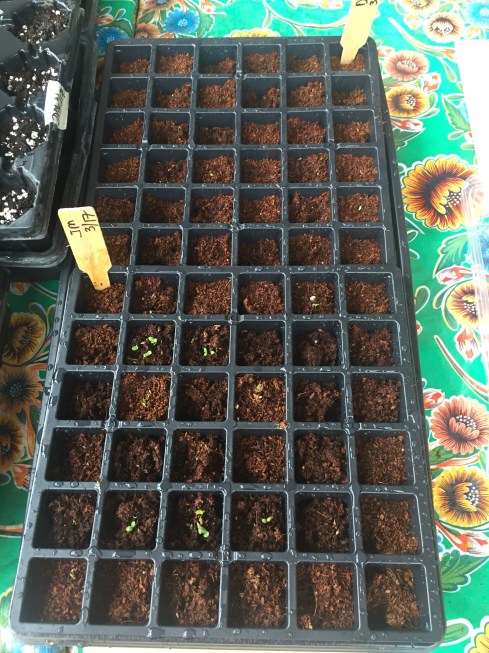
On April 1st, tempted by the warm temperatures, I planted my Indigofera Suffruticosa into their seed trays.
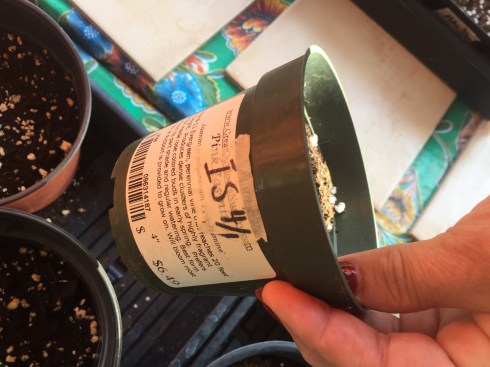
Both species sprouted willingly in the early warmth and sun and then the temperatures “dived” down to the 50’s and 60’s again.
The weather flipped back to consistently cool and overcast. The Japanese Indigo shook it off and continued to grow. The Japanese Indigo seedlings have now gone on to live in Fort Indigo (secured from digging armadillos) and are to the next phase of cricket and hail survival in anticipation of Texas summer heat. One works for one’s indigo blue here in the Hill Country. Note the madder root attempting to breach Fort Indigo.
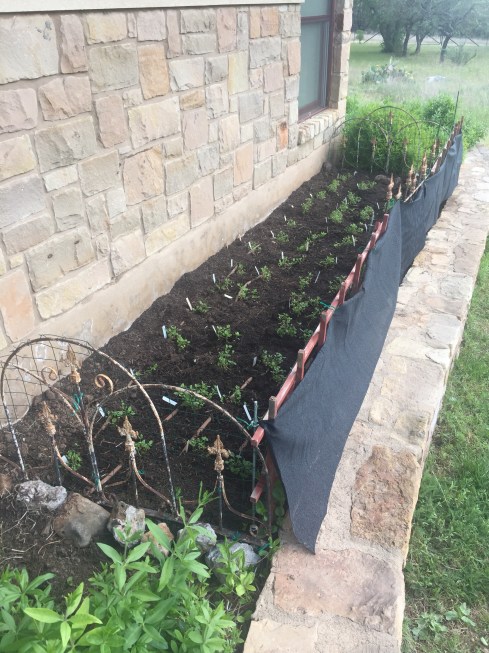
The Indigo Suffruticosa (IS) took a stand and just stopped growing, repeat…..just stopped. It did not die, it maintained its tiny height and lingered waiting longly for the sun’s warmth.
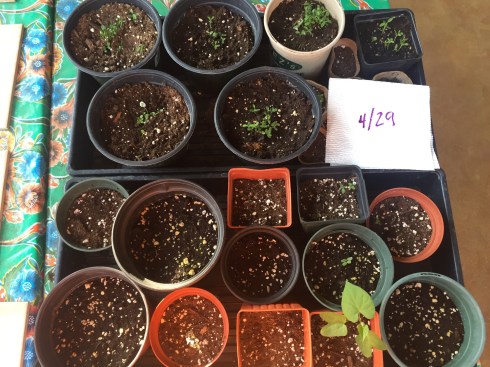
It is now May 5th and the Indigo Suffruticosa seedlings have begun to grudgingly grow again with daytime temps of 80 degrees and sunlight. In fact, a IS seedling tray, which was not in the sun, during the early heat never sprouted. Same dirt, same treatment, only difference was the sun/warmth effect.
I’ve also added more IS seeds which sprouted quickly to reward me and am now watching over both sets of seedlings until they reach a height of about 5 inches and then they will be hardened and transplanted out to my garden beds. I do look forward to all the intrepid folks reports from up north that are poised to plant their seeds and see if they can get them to grow. Repeat after me, sun…..heat…..warmth…..place those plants carefully.
I should mention that weld seeds planted in the trays at the same time had the same growth behavior. Sprout, grow, stop and hold. The weld will be planted out this week as weld dies back when our region hits the 90’s. Their life cycle is fairly quick due to the heat. Early Texas spring (whenever it may be) is the weld’s favorite season. I have about decided that with easy access to the Texas Persimmon (diospyros texana) for my dye yellow I will let go of trying to grow weld here.
I have mentioned several times that I have been on bud watch on my older Indigo Suffruticosa shrubs. They typically live two to three years here depending on our winter freezes and their age. I am very sad to report that the “Winter 2018”, which consisted of a couple of weeks in January/February with lows below 15 degrees, in the Hill Country took ALL of my bushes. It also took out some hibiscus that had survived since 2014. Our local Texas Hill Country Olive Company confirmed also that they had bad freeze damage that took out some of their trees this winter.
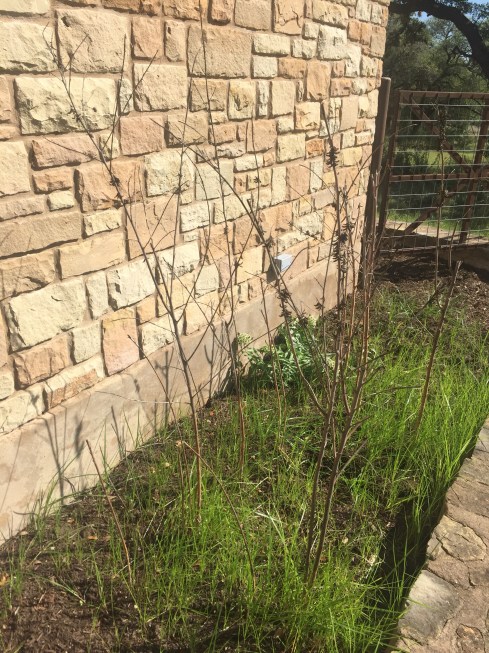
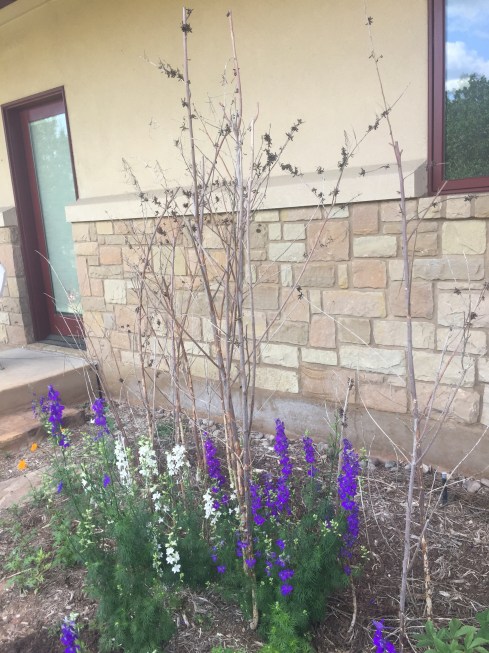
I especially mourn the tall Indigofera Suffruticosa that was “outside” the deer fence and was my marker for the “do the deer eat it” experiment. The deer left this volunteer plant outside the fence alone all year, not a nibble. I was looking forward to observing the spring’s impact on that bush because we are entering a drought period. This would have been a great temptation test for the deer or the bush, depending on your viewpoint. That test is not to happen, I will have to plant out some seedlings and defend them from the deer and digging possums. We’ll see who wins “outside the fence line”.

I do have one survivor sprouting against the wall “outside the fence”. See behind the dead shrub? This is a good time to show the difference between the Lindheimer’s Senna that grows wild here and the Indigofera Suffruticosa. They look very much alike in the teenage stage but there is a small appearance difference. The Senna has double leaves on the stem tip. The Suffruticosa has a single leaf. Subtle but significant when you are making a decision on what to pull and what to leave in place. And no, the senna does not yield blue.
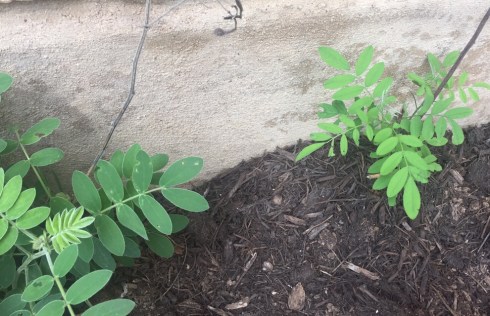
So, this week will consist of pulling the dead IS shrubs with proper ceremony, leaving a few for the hummingbirds to use as perches (at least someone is taking joy in those dead branches) and prepping the ground for the Indigofera Suffruticosa seedlings that are still in protective custody in a screen area on my porch.
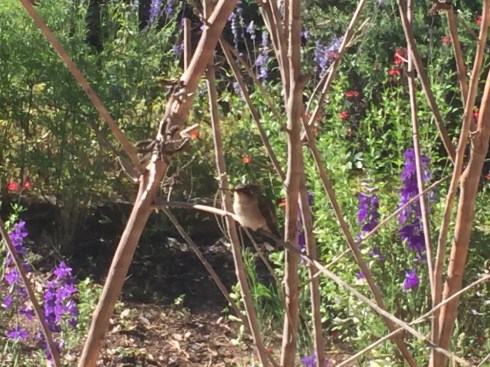
I love gardening and the life cycle, but it is times like this that one thinks of buying the indigo pigment and moving on with one’s color life!
Remembering last year’s suffruticosa leaves…..never take them for granted.
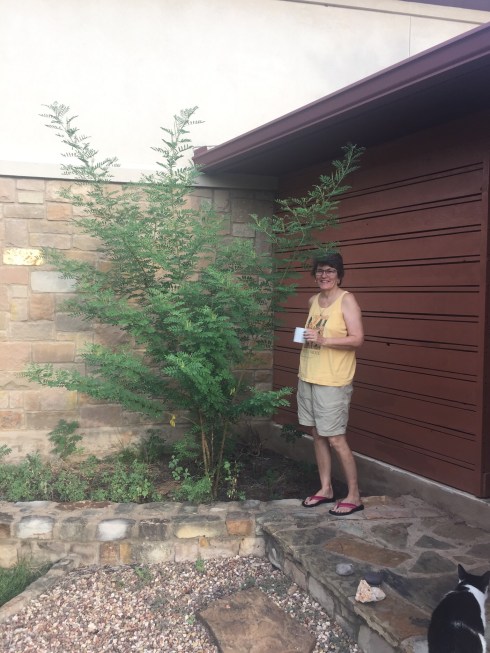
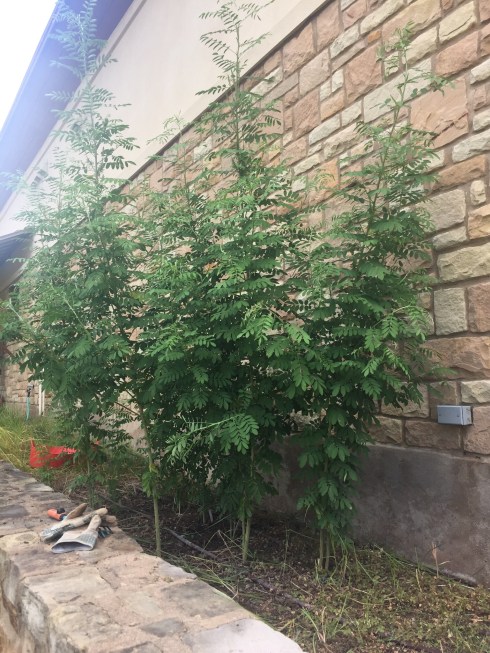
None of my 5 IS bushes survived the central Tennessee winter. It was fun to try, but I will move on to other plants. Many people here also lost their rosemary this winter.
LikeLiked by 1 person
my seedlings did not thrive. one left and very small. I will give it another go.
LikeLiked by 1 person
Thank you for the wealth of information you’ve published on this blog! I grew Japanese indigo for the first time this year, and it did okay, but I need more! I live in coastal Mississippi, and I was wondering if you think IS would handle our soggy wet weather gracefully, or if I’m better off sticking with Japanese indigo.
Also wondering if you’ve run another dried leaf vat! I attempted one with ferrous sulfate instead of Thiox (haven’t ordered any Thiox yet) and it doesn’t look promising, but I have more experimentation to do.
Thanks again!
LikeLike
Incredible Deb !
LikeLiked by 1 person